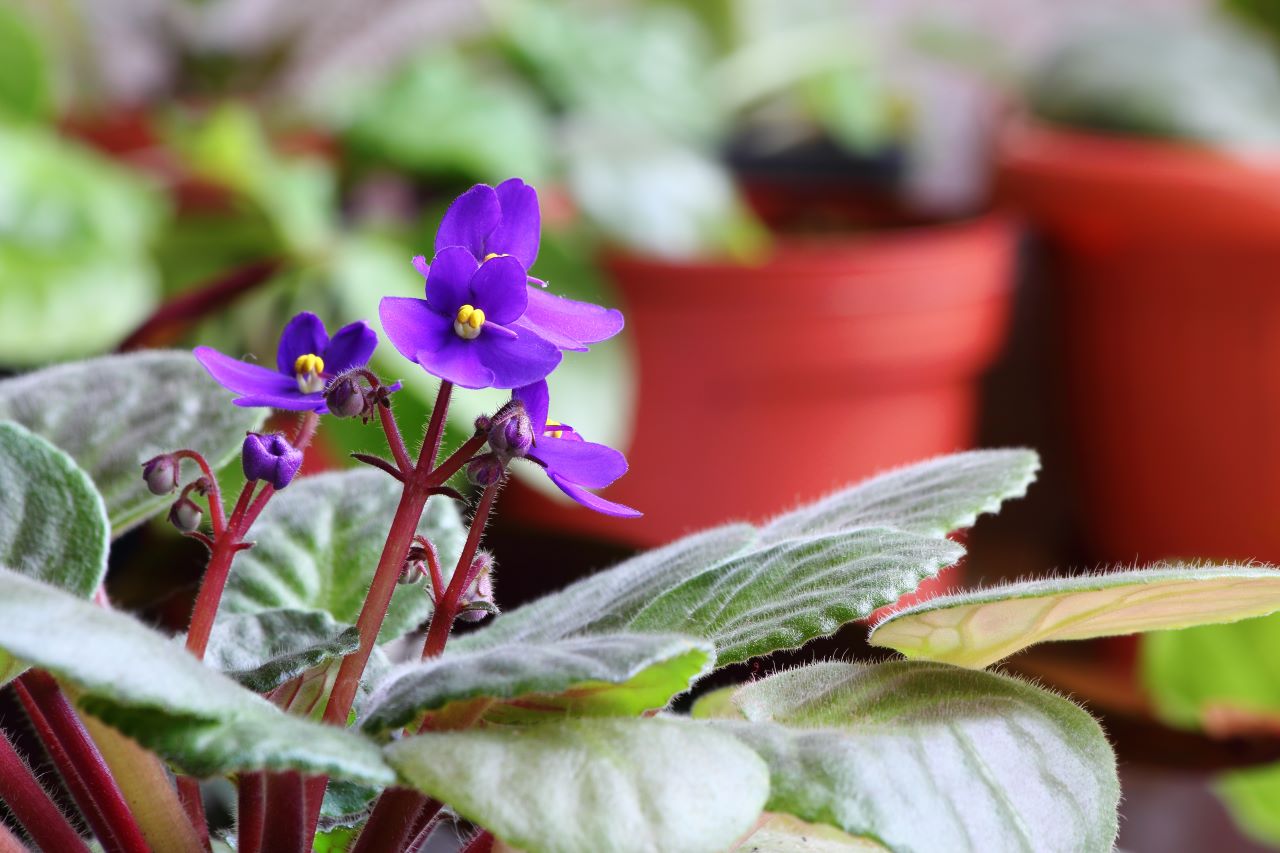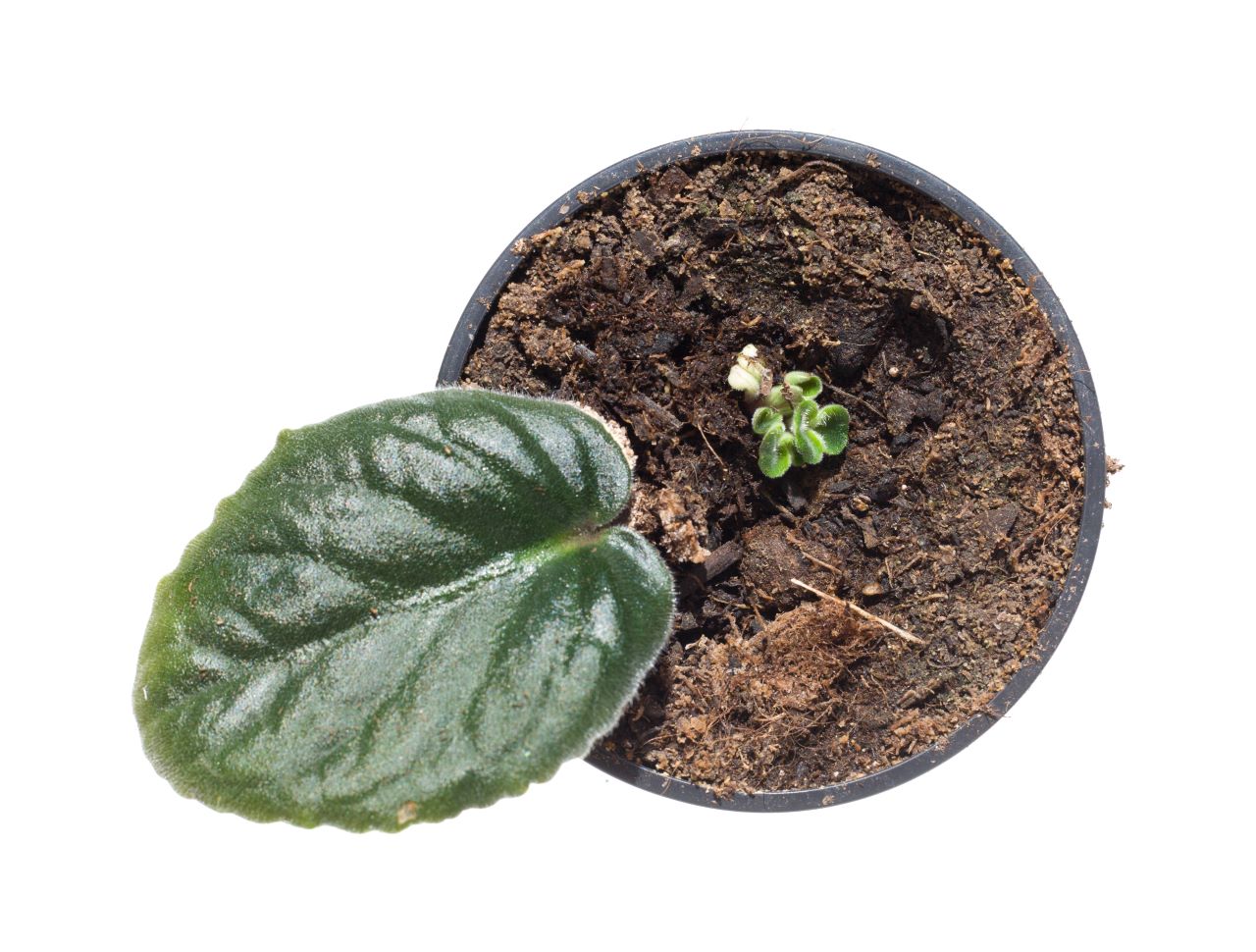African Violet FAQs
We are big fans of African violets and know many of you are, too! These houseplants add color to any space in winter and their cheerful flowers make us smile.
Since African violets can be picky about where they want to be and how they want to be watered, we created a go-to guide for you.
Keep your plant happy and healthy with these frequently asked questions about African Violets!
The Basics
- How do I pick the perfect plant?
- Select a healthy African violet in your choice of color that has dark green, spot-free leaves.
- Look for a plant with one growing center, known as a single crown, to get the most blooms.
- What container should I use?
- Keep in mind that the roots grow out, not down, so a shallow wide container works better than a narrow tall container.
- What potting soil should I use?
- Choose an organic potting soil made specifically for African violets such as Espoma Organic African Violet Mix.
- How much light should my African violet get?
- African violets need indirect sunlight, as direct sun can burn the leaves.
- Choose a north- or east-facing window and keep plants away from cold glass.
- Rotate the pot once a week so all leaves receive light.
- Extend daylight by placing African violets under a grow light during winter months.
- Do my African violets need to stay warm?
- African violets prefer the same temperatures most people find comfortable: between 70-80°F during the day, and around 65–70°F at night.
- How do I water my plant so it is happy?
- Only water your violet when the soil is dry to the touch.
- Fill the pot’s saucer, and allow the roots absorb the amount of water they need. After an hour, dump any remaining water to avoid over watering.
- When Should I fertilize?
- In the spring, summer and fall, fertilize with Espoma’s Violet! indoor houseplant food every 2-4 weeks.
Getting Leggy
- What causes my African violet to get leggy?
- Leggy is when new growth forms on a plant tip. This new growth takes most of the energy away from the bottom of the plant.
- The three main reasons on why your plant is getting leggy are age, water and light. For more information on this, visit this blog.
- What can I do to help my leggy plant?
- The best (and easiest) way to help it is to repot your African violet. Allowing more room for roots and a better growing atmosphere, will help your plant succeed.
Repotting Plants
- How often should I repot my African violet?
- Once a year should be enough to keep your plant happy. It will provide new space for root growth and also prevent it from getting leggy.
- Can I use the same size container?
- You want to find a slightly bigger container than the one it is in now – never smaller. While African violets like to be root bound to bloom, you want to provide space for it to breathe and grow.
- Can I reuse the soil?
- It’s best to start fresh with an organic potting soil made specifically for African violets such as Espoma Organic African Violet Mix. Using the same soil can bring new infestations to your plant that may not be prevalent now.
- How close to the top of the pot should the root ball be?
- You want the root ball to be below the top of the container. Don’t forget to center your plant!
- Do I need to compact the plant in the new pot?
- It is best to tuck your plant in to the new pot gently. Pressing too hard can harm the leaves, but not tucking it can cause problems in growing.
- Settle the plant by watering it from the saucer.
Start Propagating
- Is it difficult to propagate African violets?
- Not at all! It’s one of the easiest plants to propagate.
- Where do I start?
- Find a healthy leaf on one of your current plants. Be sure to have a clean cut on it before planting it in your soil. For full directions, see here.
- How long does it take?
- At about 3-4 weeks, roots should begin forming on the leaf.
- In another 3-4 weeks, your new leaves will start to sprout.
- When the sprouts get 2-3 leaves on them, which is around the 2-6 month mark, you will need to repot.
Have any more questions? Reach out to us on Facebook!
Featured Products




